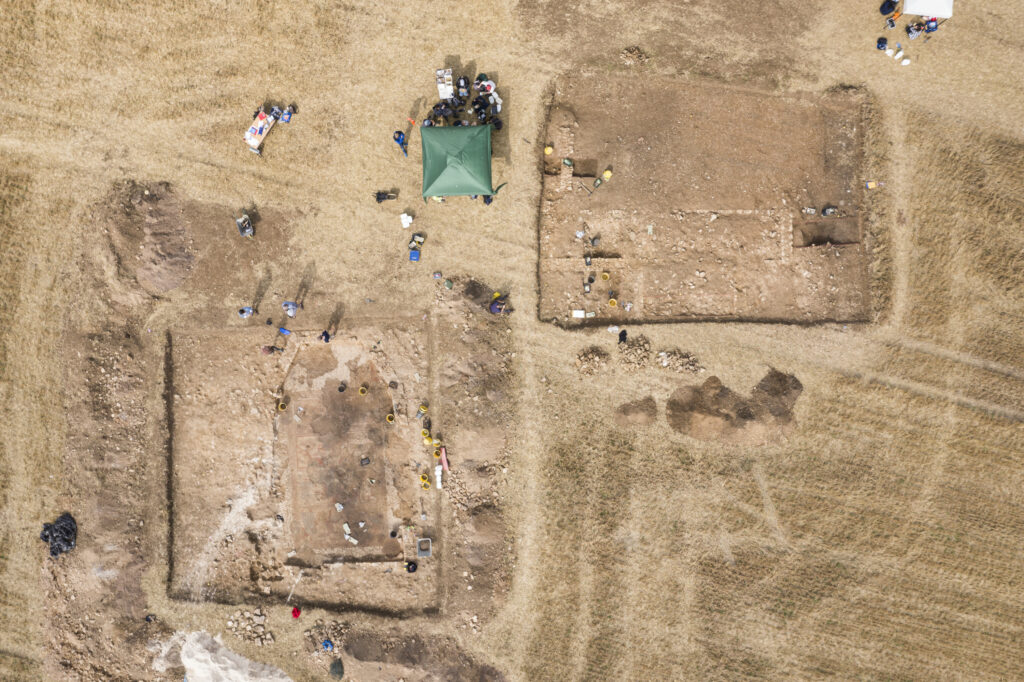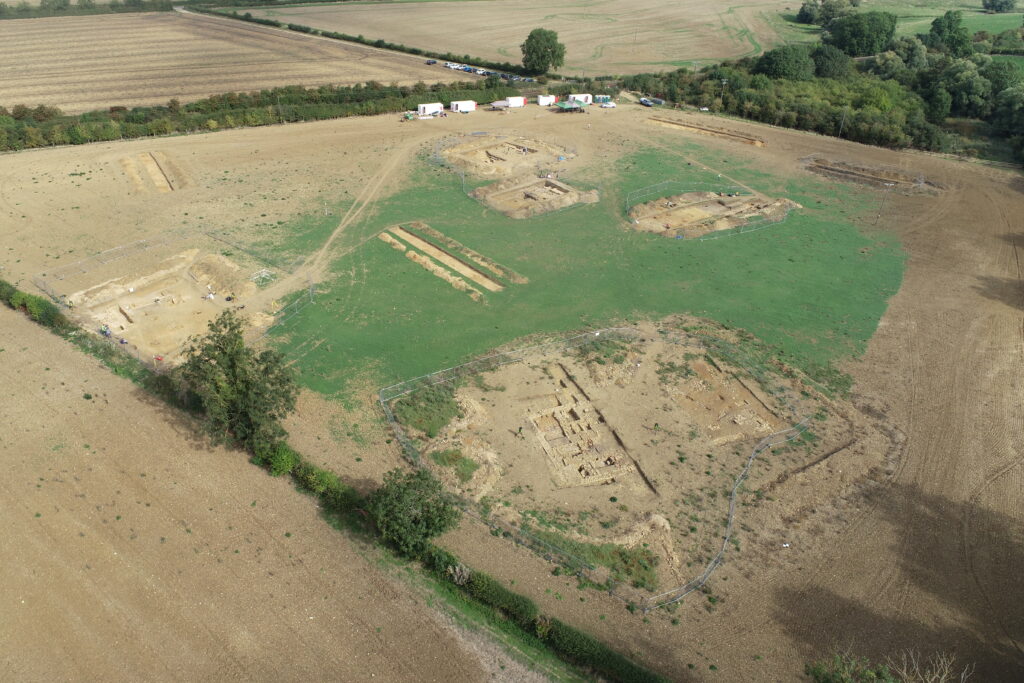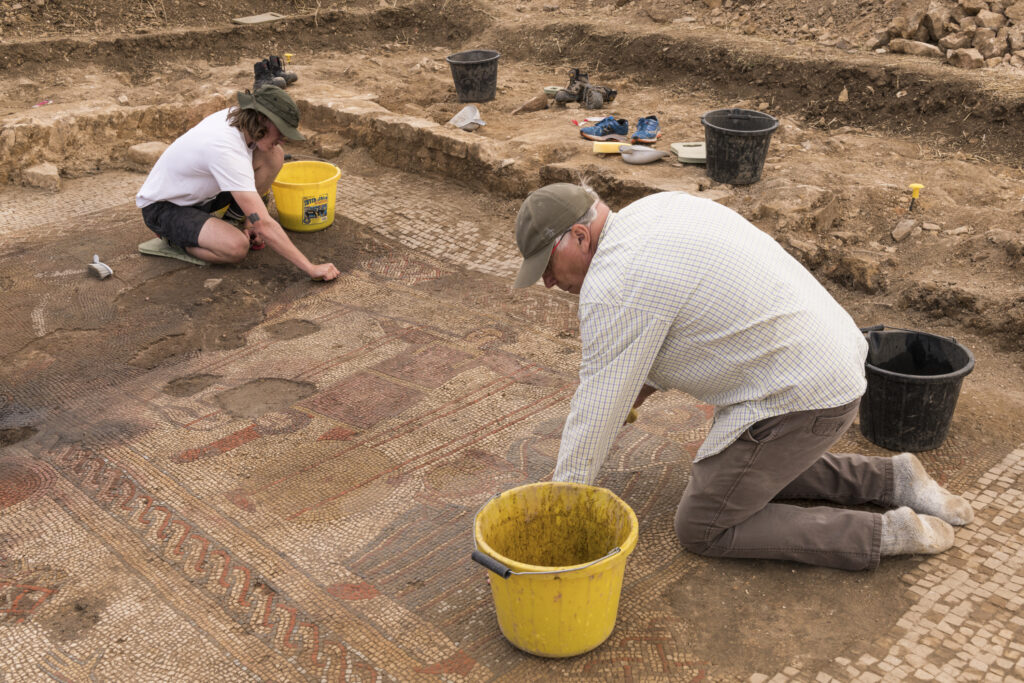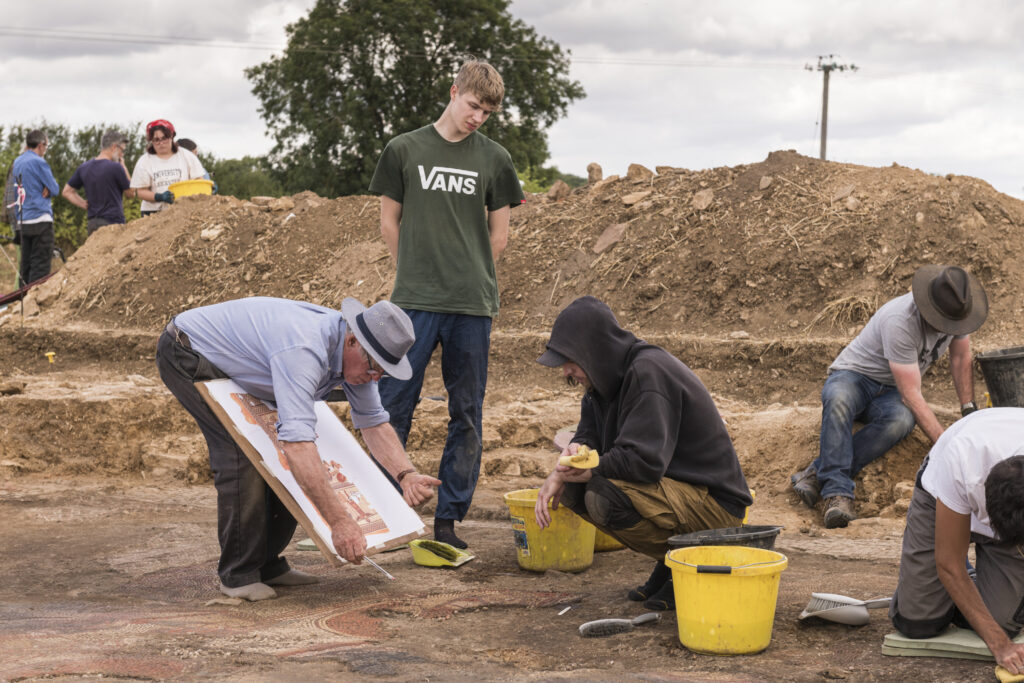Piecing Together History From a Roman Mosaic
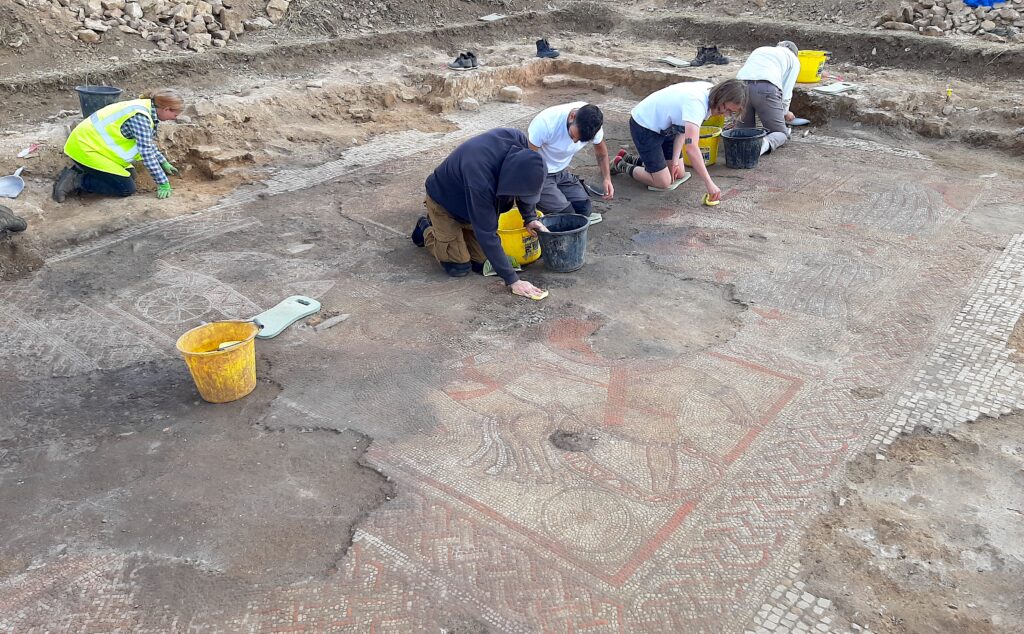
This article was originally published at The Conversation and has been republished with Creative Commons.
THE DISCOVERY OF a previously unknown Roman villa in rural Rutland, England, during the 2020 lockdown was one of the archaeological stories of the year.
Villas are emblematic features of the Roman countryside, and many are known across Britain. But this new discovery is unique. It has what could be considered the most significant Roman mosaic discovery in the past century at its heart.
The mosaic was originally partly exposed by the landowners, who were investigating in the field after discovering pottery and tile fragments. A year later, I led a team of archaeologists and students from the University of Leicester in fully exposing the mosaic floor.
This summer we returned as part of a joint excavation with Historic England.
The villa was protected as a scheduled monument by Historic England in 2021 (meaning it’s preserved for future generations to study when new techniques are developed that may assist further research), so these were to be the last excavations at the villa for the foreseeable future. We had plenty of questions.
WHAT DID THE TEAM DISCOVER?
The mosaic forms the floor of a triclinium (dining room) at the northern end of what appears to be a main villa building from the third or fourth century.
Here, residents would have wined and dined guests, providing luxurious entertainment while showing off their wealth, affinity with Roman lifestyles, and, perhaps in this case, understanding of classical Greek literature.
The mosaic tells a grim tale of revenge from near the end of the Trojan War, famously described in Homer’s Iliad.
Over three panels, it depicts the duel between the Greek hero Achilles and Prince Hector of Troy and the unsavory outcome of Achilles’ victory.
The mosaic is an incredible find. It is the only known representation of the Trojan War from Roman Britain and tells the story in an unusual “comic strip” style.
The value of this new villa lies not only with the mosaic, however, but in its completeness and the fantastic preservation of the archaeology. A geophysical survey of the field revealed an entire complex of buildings.
NEW DISCOVERIES
One of the ancillary buildings appears to have initially been a timber barn but was converted to stone sometime in the third or fourth century.
At this time, while the eastern end continued to be used for agricultural and small-scale industrial activity, the western end was converted for residential use. The remains of several partition walls and successive layers of floor suggest it was repeatedly renovated.
This reflects evidence from other excavated Roman villas and provides a good indication of the lifespan and continuing development of this type of building.
On the southern side, the team also found remains of a bath suite. A series of three rooms—hot (caldarium), medium (tepidarium), and cold (frigidarium)—incorporated underfloor heating and a water tank, which may have been used for collecting rainwater.
Further excavation also took place around the dining room that held the mosaic. Evidence was found for an earlier boundary ditch, provisionally dated to the second or third century, built during an earlier iteration of the villa. The ditch lay beneath the mosaic and had caused slumping of the floor over time. Perhaps this led to the room eventually going out of use.
Investigation of the corridors on either side of the triclinium found a collapsed patterned mosaic on the western side and a preserved mosaic in the eastern corridor, which showed a complex kaleidoscope design.
The key discovery was that the dining room was a later addition to the building. Examination of the wall relationships indicated a major refurbishment in the third or fourth century to incorporate the triclinium and Trojan War mosaic.
For now, it’s unclear why this major work took place. It may be that the villa had reached sufficient wealth to afford such a luxury installation. Alternatively, the owners may have desired to reaffirm their connections to Roman culture and its classical background.
Whatever the reason, it seems that the grand mosaic only featured fleetingly in the life of the villa. A fireplace installed in one corner of the room and large areas of scorching across the mosaic indicate that the space was repurposed for more workaday activities, before the building finally fell into disrepair.
Now that the excavations are complete, the trenches have been backfilled and the field will return to pasture. Attention will now focus on the detail of the artifacts and environmental information gathered to try to piece the story of this fantastic archaeological site back together.
We know that Roman villas like this were at the center of large farming estates. While the buildings may have now been put to rest, we hope to widen the search into the surrounding landscape to understand the bigger picture of what was happening in this part of the Roman countryside.
This will allow us to develop the links we have created with the local archaeological community so we can involve them in discovering further ties to their local heritage.
































